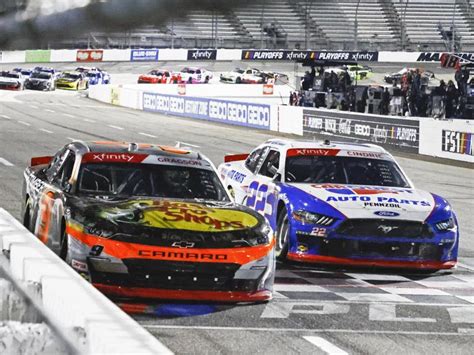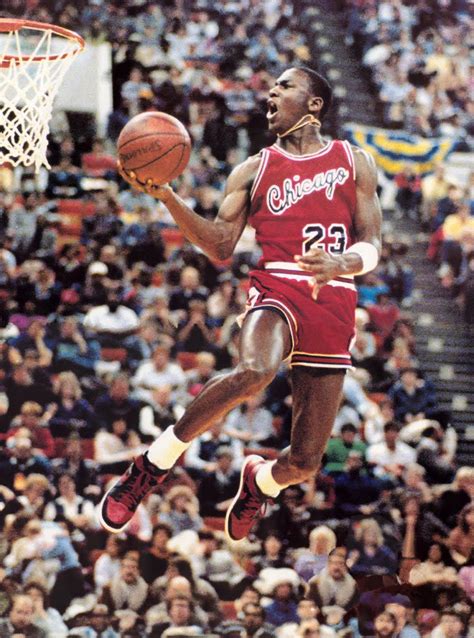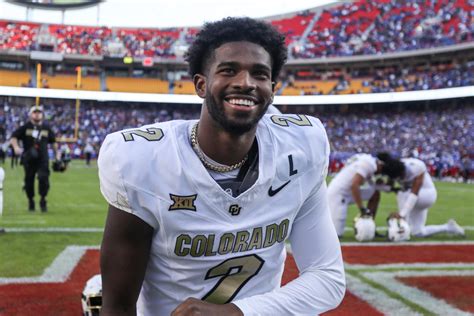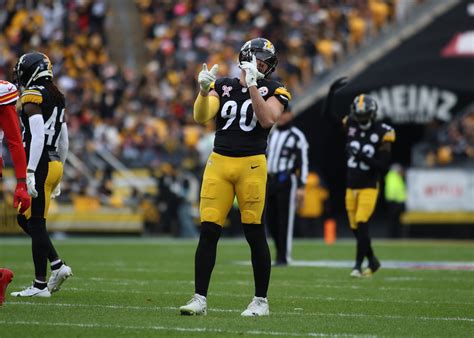
Austin Cindric and Noah Gragson encountered setbacks during practice for the NASCAR Cup Series race at Mexico City, experiencing issues that could impact their performance in the upcoming event. Cindric, piloting the No. 2 Ford, suffered a mechanical failure, while Gragson, driving the No. 10 Ford, grappled with handling issues, setting the stage for challenging race conditions.
Mexico City Practice Hampered by Troubles for Cindric and Gragson
Mexico City’s Autódromo Hermanos Rodríguez proved a testing ground for NASCAR Cup Series drivers, with Austin Cindric and Noah Gragson facing significant challenges during practice sessions ahead of the race. Cindric’s No. 2 Ford experienced a mechanical issue, forcing him to the garage for repairs, while Gragson struggled with the handling of his No. 10 Ford, highlighting the complexities of navigating the unique track conditions.
Cindric’s mechanical problem arose early in the practice, curtailing his ability to gain valuable track time and gather crucial data for the race setup. The specific nature of the mechanical failure was not immediately disclosed, but the severity of the issue necessitated a prolonged stay in the garage as the team worked diligently to diagnose and rectify the problem. “It’s never ideal to have mechanical issues during practice,” said a crew member from Team Penske, Cindric’s racing team, “but we are working hard to get the car back in shape for qualifying and the race.” The setback put Cindric at a disadvantage compared to competitors who were able to complete their planned practice runs uninterrupted.
Gragson’s difficulties centered on the car’s handling characteristics, as he battled a lack of grip and instability throughout his practice sessions. The high altitude of Mexico City, combined with the track’s unique layout, often leads to cars behaving differently than they would on lower-altitude circuits. Gragson reported struggling to find a comfortable balance in the car, making it difficult to maintain consistent speed and control. “The car is just not responding the way I need it to,” Gragson noted during a pit stop. “We’ve tried a few adjustments, but we still have work to do to get it dialed in.” The team worked on adjustments to the suspension and aerodynamics in an effort to improve the car’s performance.
The challenges faced by Cindric and Gragson underscore the complexities of racing at the Autódromo Hermanos Rodríguez, where setup and adaptability are paramount. The track, known for its long straightaways and tight corners, demands a delicate balance between speed and handling. The high altitude further complicates matters, as the thinner air affects engine performance and aerodynamics, requiring teams to make specialized adjustments.
As the teams prepared for qualifying, the pressure mounted to resolve the issues that plagued Cindric and Gragson. Qualifying position is crucial for success in any NASCAR race, but it is especially important on tracks where passing is difficult. A poor qualifying effort could relegate Cindric and Gragson to the back of the field, making it more difficult to contend for the win.
The difficulties experienced by Cindric and Gragson opened the door for other drivers to shine during practice. Veteran drivers with experience at the Autódromo Hermanos Rodríguez were able to quickly adapt to the track conditions and post competitive lap times. Young drivers looking to make a name for themselves also capitalized on the opportunity, demonstrating their skills and determination.
The race in Mexico City holds significant importance for NASCAR, as it represents the sport’s commitment to expanding its reach beyond the United States. The event attracts a large and enthusiastic crowd of fans, creating a unique and vibrant atmosphere. For drivers, the race offers a chance to showcase their talents on an international stage and connect with fans from different cultures.
Cindric and Gragson entered the Mexico City race with high hopes, both looking to improve their standing in the championship standings. Cindric, a former NASCAR Cup Series champion, is seeking to regain his championship form after a somewhat inconsistent start to the season. Gragson, a relative newcomer to the Cup Series, is aiming to prove himself as a competitive driver and secure his first career victory.
Despite the setbacks in practice, Cindric and Gragson remained optimistic about their chances in the race. Both drivers have demonstrated resilience and determination throughout their careers, and they are confident that they can overcome the challenges they face in Mexico City. With the support of their teams and the benefit of their experience, Cindric and Gragson are determined to put on a strong showing for the fans and compete for the win. The teams worked late into the night to address the issues and prepare the cars for qualifying and the race. The outcome of their efforts will be revealed when the cars hit the track for qualifying.
The race in Mexico City is just one chapter in the long and storied history of NASCAR. The sport has a rich tradition of competition, innovation, and excitement. From its humble beginnings on the dirt tracks of the American South to its current status as a global phenomenon, NASCAR has captivated fans around the world with its thrilling races and colorful personalities. The challenges faced by Cindric and Gragson in Mexico City are a reminder of the unpredictable nature of racing and the importance of perseverance and teamwork.
Expanded Context and Analysis
The problems encountered by Cindric and Gragson aren’t simply isolated incidents; they highlight broader factors influencing performance in NASCAR races, particularly at unique venues like the Autódromo Hermanos Rodríguez. These factors include:
-
Mechanical Reliability: In a sport where hundredths of a second can determine the outcome of a race, mechanical reliability is paramount. A single component failure can derail an entire weekend, regardless of a driver’s skill. Cindric’s mechanical issue underscores the intense stress that NASCAR cars endure and the constant need for teams to monitor and maintain their vehicles. The specifics of the failure are critical to understanding its impact. Was it engine-related, potentially affected by the altitude? Was it a suspension component, stressed by the track’s demanding layout? The answer dictates the extent of repairs and the potential for recurrence.
-
Aerodynamic Sensitivity: The Autódromo Hermanos Rodríguez presents a unique aerodynamic challenge. The thinner air at high altitude reduces downforce, making cars more sensitive to changes in airflow. This sensitivity is compounded by the track’s infield section, a tight and twisting complex that demands precise handling. Gragson’s struggles with car handling likely stem from this aerodynamic sensitivity, requiring his team to fine-tune the car’s setup to maximize grip and stability. Teams often experiment with different rear spoiler angles, splitter configurations, and ride height adjustments to compensate for the altitude and track layout.
-
Altitude Effects: Mexico City’s high altitude (over 7,300 feet above sea level) significantly impacts engine performance. The thinner air contains less oxygen, leading to a reduction in horsepower. Teams must adjust engine parameters to compensate for this loss of power, often by leaning out the fuel mixture and optimizing ignition timing. However, these adjustments can also affect engine reliability, adding another layer of complexity. The altitude also affects the drivers physically. The reduced oxygen levels can lead to fatigue and decreased concentration, requiring drivers to be in peak physical condition.
-
Track Specificity: The Autódromo Hermanos Rodríguez is a distinctive circuit with a combination of long straights and technical infield sections. Its configuration demands a compromise between straight-line speed and cornering grip. Teams must strike a balance in their car setup to be competitive on both parts of the track. The track’s surface is also a factor, as it can be abrasive and lead to increased tire wear. Tire management is crucial for success, requiring drivers to conserve their tires during long green-flag runs.
-
Team Dynamics and Communication: Effective communication between the driver and the crew chief is essential for diagnosing and addressing handling issues. Gragson’s comments about the car not responding as he needed it to highlight the importance of this communication. The crew chief must be able to interpret the driver’s feedback and translate it into meaningful adjustments to the car’s setup. This process requires a strong relationship built on trust and mutual understanding.
Impact on Qualifying and Race Strategy
The practice setbacks for Cindric and Gragson have significant implications for their qualifying efforts and race strategy.
-
Qualifying Implications: A poor qualifying result can severely hamper a driver’s chances of success in the race. Starting further back in the field makes it more difficult to gain track position and increases the risk of being involved in an early accident. Cindric’s mechanical issue limited his practice time, putting him at a disadvantage in qualifying. Gragson’s handling problems also affected his confidence and ability to push the car to its limits. The qualifying session is critical for both drivers to regain lost ground.
-
Race Strategy Adjustments: Depending on their qualifying positions, Cindric and Gragson may need to adjust their race strategies. If they start further back in the field, they may need to be more aggressive on pit stops or gamble on different tire strategies. They may also need to be more patient and focus on making steady progress through the field, avoiding unnecessary risks. The ability to adapt and make quick decisions is crucial for success in NASCAR racing.
-
Psychological Impact: The practice setbacks can also have a psychological impact on the drivers. It’s important for Cindric and Gragson to remain focused and confident, despite the challenges they face. They need to trust their teams and believe in their ability to overcome adversity. A positive attitude and strong mental fortitude can make a significant difference in their performance.
The Bigger Picture: Team Penske and Stewart-Haas Racing
The situations of Cindric and Gragson also provide a glimpse into the performance dynamics of their respective teams: Team Penske and Stewart-Haas Racing.
-
Team Penske (Cindric): Team Penske is a powerhouse in NASCAR, known for its technical expertise and commitment to excellence. The team has a long history of success, with multiple championships and race wins. Cindric’s affiliation with Team Penske provides him with access to top-notch resources and engineering support. The team’s ability to quickly diagnose and repair his mechanical issue demonstrates its strength and depth.
-
Stewart-Haas Racing (Gragson): Stewart-Haas Racing is another prominent team in NASCAR, co-owned by Gene Haas and Tony Stewart. The team has a strong driver lineup and a reputation for innovation. Gragson’s move to Stewart-Haas Racing was seen as a significant opportunity for him to elevate his career. The team’s efforts to address his handling problems show its commitment to supporting its drivers and providing them with competitive equipment.
Fan Engagement and Media Coverage
The challenges faced by Cindric and Gragson generate significant interest among NASCAR fans and media outlets.
-
Social Media Buzz: Fans follow their favorite drivers closely on social media, and any setbacks they encounter are quickly discussed and analyzed. The hashtags #NASCAR, #MexicoGP, #AustinCindric, and #NoahGragson trend during the practice sessions and qualifying, reflecting the high level of fan engagement. Social media platforms provide a forum for fans to share their opinions, offer support, and speculate about the potential impact on the race.
-
Media Analysis: NASCAR media outlets provide extensive coverage of practice and qualifying, offering expert analysis and insights into the drivers’ performances. TV commentators, radio hosts, and online journalists dissect the issues faced by Cindric and Gragson, providing fans with a deeper understanding of the challenges they face. The media coverage helps to shape the narrative of the race and build anticipation for the main event.
-
Impact on Betting Odds: The practice setbacks can also affect the betting odds for the race. Bookmakers adjust the odds based on the drivers’ performances in practice and qualifying, reflecting the perceived likelihood of them winning the race. Cindric and Gragson’s difficulties may lead to a decrease in their odds, making them less attractive bets for some fans.
Frequently Asked Questions (FAQ)
-
What was the specific mechanical issue that Austin Cindric experienced during practice?
- The exact nature of the mechanical issue was not explicitly detailed in the source article. It was reported as a general mechanical failure that required the No. 2 Ford to spend a significant amount of time in the garage for diagnosis and repair.
-
What handling problems did Noah Gragson encounter with his No. 10 Ford?
- Gragson struggled with a lack of grip and overall instability in the car. He reported that the car was not responding as he needed it to, making it difficult to maintain consistent speed and control.
-
How does the high altitude of Mexico City affect the performance of NASCAR cars?
- The high altitude results in thinner air, which reduces both engine horsepower and aerodynamic downforce. Teams must adjust their engine parameters and car setups to compensate for these effects, which can also impact engine reliability and car handling.
-
How could these practice setbacks affect Cindric and Gragson’s qualifying and race strategy?
- Poor practice performance can lead to a poor qualifying position, which makes it more difficult to gain track position during the race. It might force the teams to adopt more aggressive pit strategies or make riskier decisions to advance through the field.
-
What are the general challenges of racing at the Autódromo Hermanos Rodríguez in Mexico City?
- The track presents a unique combination of long straightaways and technical infield sections, requiring a balance between speed and handling. The high altitude affects engine performance and aerodynamics. Plus, the track surface can be abrasive, leading to increased tire wear.
Conclusion
The practice sessions at the Autódromo Hermanos Rodríguez in Mexico City proved to be a trial by fire for Austin Cindric and Noah Gragson. While the setbacks they encountered presented immediate challenges, they also highlighted the complexities and nuances of NASCAR racing on an international stage. From mechanical reliability to aerodynamic sensitivity and the impact of high altitude, the race in Mexico City demands adaptability, resilience, and teamwork. As Cindric and Gragson prepared for qualifying and the race, their ability to overcome these challenges and capitalize on opportunities would be crucial to their success. The broader implications extend to their respective teams, Team Penske and Stewart-Haas Racing, showcasing their depth, technical expertise, and commitment to supporting their drivers. Furthermore, the event underscores NASCAR’s global reach and its ability to engage fans across different cultures, creating a vibrant and competitive atmosphere. Ultimately, the stories of Cindric and Gragson serve as a reminder of the unpredictable nature of racing and the importance of perseverance in the face of adversity, adding to the rich tapestry of NASCAR’s history. The ability of these teams to adjust and respond to these unforeseen challenges will ultimately dictate their success throughout the race weekend.









